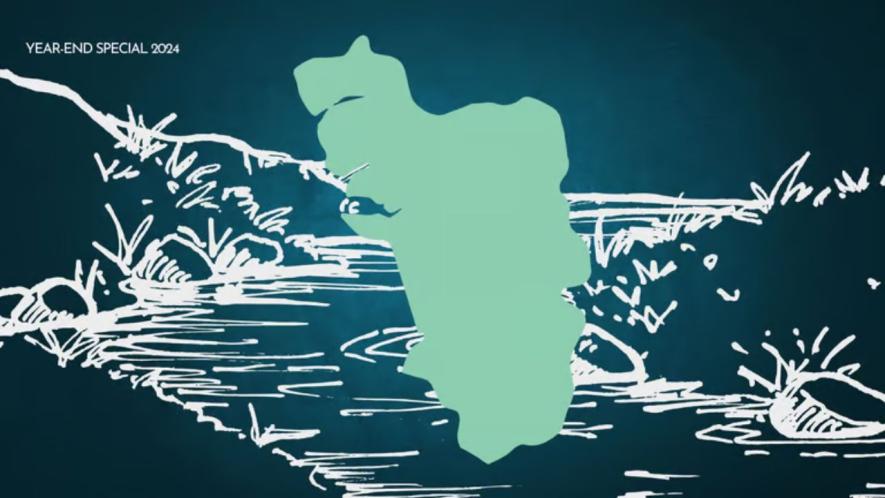The Year That Was—2: When Goa’s Rivers Found Peace

The most significant judgment that I obtained this year was from the High Court of Bombay at Goa on a public interest litigation (PIL) filed by a non-governmental organisation (NGO) to halt the continuance of illegal sand mining from Goa’s rivers.
Goa has a large number of rivers that traverse its landscape, and which have become the target of the construction industry ever since the extraction of sand from the open beaches has gone strictly out of bounds. The booming construction industry badly needs sand to continue its business. The result: full-scale illegal extraction of sand, day and night, from all of Goa's rivers, leading to the collapse of the river banks in several areas and large-scale loss of fertile agricultural properties of people residing along the river banks.
A PIL was filed in 2018 on the subject of illegal sand mining and after considering the suggestions of the petitioner and respondents, the court drew up a charter for the directorate of mines, the department of transport and the police to follow in order to halt the illegal sand mining activity.
The gravity of the destruction caused by the rampant illegal sand mining was confirmed by a report of the Goa Coastal Zone Management Authority, which found river banks at several places weakened and eroded.
Unfortunately, the court’s Order was observed more in the breach than in its spirit, much less the letter of the law. The following year, the Goa Rivers Sand Protectors Network, a band of dedicated eco-warriors, filed a contempt petition with photographs and videos on the continuance of the illegal activity on an even larger scale.
The gravity of the destruction caused by the rampant illegal sand mining was confirmed by a report of the Goa Coastal Zone Management Authority, which found river banks at several places weakened and eroded.
Appalled and anguished at the total lack of compliance with its Orders, the court first launched an enquiry into the reasons why those responsible for ensuring compliance were derelict in their duties.
Upon finding that there was total neglect of the court’s Orders, the court appointed two nodal officers to liaise with the authorities for swift responses to complaints filed by citizens. However, it soon became very apparent that the authorities were loathe to take effective action because the monetary returns from condoning the activity or looking the other way were far more lucrative.
Undaunted by this resistance from the authorities, the court valiantly attempted, step by step, to break the vicious hold that the sand mining mafia held over those in power. It directed the installation of CCTV cameras at several areas endemic to the activity, pressed into service flying squads of the mines department, got the officers of other departments involved (talathis, mamlatdars, forest, water resources, captain of ports, etc.) and ordered that first information reports (FIRs) be registered not only against those involved in the activity but also against the owners of riverside properties on which the illegal sand was stored after harvesting.
The Standing Order was immediately impactful as police were soon seen on 24-hour duty, monitoring several river stretches notorious for the nefarious activity.
Stung by the court’s criticism of the abject behaviour of the police who appeared hand-in-glove with the violators, the inspector general of police issued a Standing Order to be followed by all grades of officers, which included a recording of entries in the station diaries, reports to be filed with superiors and severe strictures in case of dereliction of duty.
The Standing Order was immediately impactful as police were soon seen on 24-hour duty, monitoring several river stretches notorious for the nefarious activity.
Finally, the court called for an action plan to be drawn up by the highest officers in the state— the chief secretary and the director general of police— to ensure that river sand mining is halted and penalties suitably increased.
The action plan included the purchase of speed boats and Radio Frequency Identification Devices (RFIDs) for swift apprehension of violators, cancellation of licences of canoes found in violation, increase in penalties and a special task force for monitoring the cases filed against violators.
The sustained action from the high court on an almost weekly basis over nearly four years ensured that by December 2023, the rivers finally found peace. It must be appreciated that it is only because the judges recognised the importance of protection of the rivers which had already been mined for sand far beyond their capacity and which would be permanently damaged if the illegal sand mining continued that this nefarious activity could be finally brought to a complete halt with a standard operating procedure in place for dealing with future cases of illegal sand mining.
It was a long and hard-won battle, the success of which was possible due to the persistence of the activists, who regularly provided updates either on the progress or the setbacks they encountered but more significantly due to the willingness of the judges to carefully address these grievances and admonish the authorities, compelling them to find ways to uphold their obligations to society.
Get the latest reports & analysis with people's perspective on Protests, movements & deep analytical videos, discussions of the current affairs in your Telegram app. Subscribe to NewsClick's Telegram channel & get Real-Time updates on stories, as they get published on our website.
























